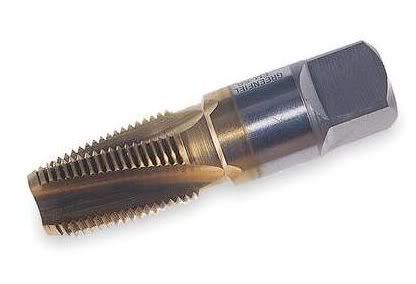David Morrow
Well-Known Member
- Joined
- Sep 8, 2008
- Messages
- 227
- Reaction score
- 60
I'm always looking for air compressor fitting so I finally just bought 1/4", 3/8", and 1/2" dies ( I already had the taps ). Now I can make just about anything that I want. Using the taps & dies really takes more effort and care than normal taps & dies because they are tapered. I have made fitting from brass and aluminum. I have tried various lubricants but, it's more of a struggle than I would have expected. I do get the job done eventually completed with a liberal dose of physical and verbal exercise.
Does anyone have any tricks or tips in this regard ( other than broadening my vocabulary )
Does anyone have any tricks or tips in this regard ( other than broadening my vocabulary )






